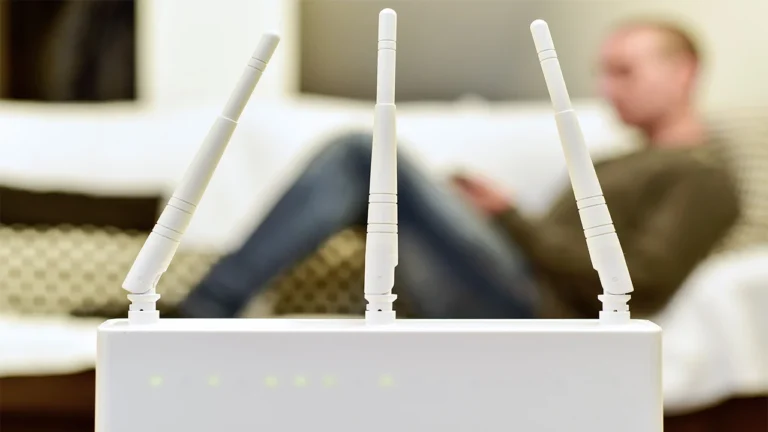Creating a smart kitchen can transform your culinary space into a hub of convenience, efficiency, and innovation. With the right technology and planning, you can streamline your cooking processes, enhance safety, and optimize energy use. To help you navigate the myriad options available and make informed decisions, we’ve put together a comprehensive checklist. This guide covers everything from understanding the basics of smart kitchen technology to planning, installation, and maintenance.
A smart kitchen integrates advanced technology into traditional kitchen appliances and tools to create a more efficient, convenient, and enjoyable cooking environment. The purpose of this checklist is to provide a step-by-step guide for setting up a smart kitchen, ensuring you consider all essential aspects, from connectivity to energy efficiency.
1. Smart Kitchen Technology

Before diving into the specifics, it’s important to understand the fundamental components of a smart kitchen. At its core, a smart kitchen includes appliances and gadgets connected to the internet, allowing for remote control, automation, and integration with other smart devices.
Key Components of a Smart Kitchen:
- Smart Appliances: These include refrigerators, ovens, dishwashers, and microwaves with internet connectivity and advanced features.
- Smart Gadgets: Smaller devices like coffee makers, scales, and thermometers that offer smart functionalities.
- Control Systems: Centralized systems or apps that allow for the control and monitoring of devices, often through a smartphone or voice assistant.
Understanding these basics will help you make informed decisions about which devices and systems to incorporate into your kitchen.
2. Prioritizing Key Areas
When designing your smart kitchen, it’s crucial to prioritize the areas that will most benefit from smart technology. Consider the following key areas:
Cooking and Food Preparation
The core of any kitchen, cooking, and food preparation can be significantly enhanced with smart technology. Key smart appliances include:
- Smart Ovens and Cooktops: These can be controlled remotely, offer recipe guidance, and even adjust cooking times and temperatures automatically.
- Smart Cooking Gadgets: Devices like smart thermometers, sous vide machines, and slow cookers can help you achieve perfect results every time. Many offer app control and notifications.
Food Storage
Proper food storage is essential for maintaining freshness and reducing waste. Smart solutions in this area include:
- Smart Refrigerators: These can track expiration dates, suggest recipes based on available ingredients, and even allow you to see inside without opening the door.
- Smart Pantry and Inventory Management: Systems that track inventory and help manage your pantry, alerting you when supplies are low.
Cleaning and Maintenance
Keeping your kitchen clean and well-maintained is easier with smart devices:
- Smart Dishwashers: These can be programmed remotely, offer efficient cleaning cycles, and alert you when maintenance is needed.
- Smart Trash Cans and Recycling Systems: These can help manage waste more efficiently, some even providing recycling guidance.
3. Connectivity and Integration
For a truly smart kitchen, all devices need to communicate with each other and with you. Connectivity and integration are key to achieving this.
Importance of a Strong Wi-Fi Network
A reliable Wi-Fi network is the backbone of any smart home, and the kitchen is no exception. Ensure your kitchen has a strong signal, especially in areas where smart devices will be installed. Consider using Wi-Fi extenders or mesh systems if necessary.
Centralized Control Systems
A smart kitchen is most effective when all devices can be controlled from a single platform. Centralized control systems, such as smart hubs or dedicated apps, allow you to manage everything from cooking times to lighting with ease. These systems can also integrate with voice assistants like Amazon Alexa, Google Assistant, or Apple Siri for hands-free control.
Compatibility with Existing Smart Home Devices
If you already have a smart home setup, ensure your new kitchen devices are compatible with your existing ecosystem. This will allow for seamless integration and more efficient control.
4. Energy Efficiency and Sustainability
One of the key benefits of a smart kitchen is the potential for energy savings and a reduced environmental footprint.
Energy-Efficient Smart Appliances
Many smart appliances are designed to be more energy-efficient than their traditional counterparts. Look for Energy Star ratings and features like eco-modes, which can significantly reduce energy consumption.
Smart Lighting and Climate Control
Smart lighting systems can be programmed to turn off when not needed, saving electricity. Similarly, smart thermostats can adjust the kitchen temperature based on cooking activities, further optimizing energy use.
Eco-Friendly Practices and Tools
Incorporate eco-friendly practices, such as using smart plugs to cut off power to devices when they’re not in use. Smart water-saving devices, like faucets with touchless controls, can also help reduce water waste.
5. Safety and Security
Safety and security are paramount in the kitchen, and smart technology can provide significant enhancements in these areas.
Smart Sensors and Alarms
Install smart smoke and carbon monoxide detectors in your kitchen. These devices can send alerts to your smartphone in case of emergencies, ensuring you’re aware even if you’re not at home.
Smart Cameras and Doorbells
For added security, consider installing smart cameras and doorbells. They can help monitor activity in and around your kitchen, providing peace of mind.
Child Safety Features
If you have young children, smart locks and app controls can help keep dangerous areas or appliances secure. Some smart ovens and stoves also offer child lock features.
6. Enhancing Convenience and Usability
The ultimate goal of a smart kitchen is to make your life easier. Consider these features to enhance convenience:
Voice Control and Smart Assistants
Voice-controlled devices allow you to operate kitchen gadgets hands-free, a significant benefit when your hands are full. Integrating smart assistants like Alexa, Google Assistant, or Siri can streamline tasks like setting timers, adjusting temperatures, or even ordering groceries.
Remote Monitoring and Control
One of the most appealing aspects of smart technology is the ability to control your kitchen remotely. Whether you want to preheat the oven on your way home or check if you left the fridge door open, smart devices provide peace of mind and convenience.
Customization and User Profiles
Many smart devices offer customization options, allowing you to set preferences for different family members. For example, a smart coffee maker can be programmed to brew different types of coffee based on user profiles.
7. Planning and Budgeting
Setting up a smart kitchen can be a significant investment, so planning and budgeting are crucial.
Setting a Budget for Smart Kitchen Upgrades
Start by determining how much you’re willing to spend. Consider both initial costs and potential long-term savings from energy efficiency and convenience.
Identifying High-Priority Items
List the smart devices and appliances you consider essential. Prioritize based on your budget and the features most important to you.
Considering Long-Term Value and Upgrades
Think about the long-term value of the devices you choose. Opt for appliances that offer software updates and can integrate with future technologies.
8. Installation and Setup
Once you’ve selected your smart devices, the next step is installation and setup.
DIY vs. Professional Installation
Decide whether you’ll install the devices yourself or hire professionals. Some devices, like smart lights or plugs, are easy to install, while others, like smart ovens, may require professional help.
Setting Up and Configuring Devices
Follow the manufacturer’s instructions for setup. This often involves downloading an app, connecting to Wi-Fi, and configuring settings. Ensure all devices are connected to your central control system or app.
Testing and Troubleshooting
After installation, test each device to ensure it’s working correctly. Familiarize yourself with troubleshooting steps in case issues arise.
9. Maintenance and Support
To keep your smart kitchen running smoothly, regular maintenance is essential.
Regular Updates and Software Maintenance
Smart devices often receive software updates that enhance functionality or security. Ensure your devices are set to receive automatic updates or check for updates regularly.
Warranty and Support Services
Keep track of warranties and support services for your devices. Know how to contact customer support if issues arise.
Tips for Keeping Your Smart Kitchen Running Smoothly
Regularly clean and maintain your devices according to the manufacturer’s instructions. This not only prolongs their life but also ensures they function optimally.
10. Future-Proofing Your Smart Kitchen
Technology evolves rapidly, so it’s wise to future-proof your smart kitchen as much as possible.
Keeping Up with New Technologies and Trends
Stay informed about new developments in smart kitchen technology. This can help you decide when to upgrade or add new devices.
Planning for Future Expansions
Consider the potential for expanding your smart kitchen in the future. Ensure your current setup can accommodate new devices and technologies.
Ensuring Compatibility with New Devices
When purchasing new devices, check their compatibility with your existing smart home ecosystem. This ensures seamless integration and functionality.
Conclusion
Creating a smart kitchen is an exciting journey that can transform your cooking and dining experience. By following this comprehensive checklist, you can ensure that your smart kitchen is well-planned, efficient, and tailored to your needs. Remember, you don’t have to do everything at once—start with the essentials and gradually build up your smart kitchen over time. Enjoy the convenience, efficiency, and innovation that smart technology brings to your culinary space!




